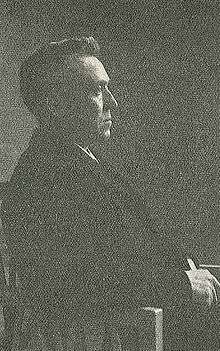Axel Petersson Döderhultarn

Axel Petersson Döderhultarn, formerly Axel Petersson, Woodcarver, (December 12, 1868 – March 15, 1925) was one of the recognized masters of wood carving, most famous for Scandinavian flat-plane style of woodcarving.
Early years
Axel Petersson Döderhultarn was born December 12, 1868 in the parish of Döderhult, Sweden (Oskarshamn Municipality). As a boy his primary interest was in whittling, and carving small figures. This activity was considered worthless by his friends and family in Sweden. His family decided the best thing for him to do as a young adult was to emigrate to the United States. Petersson did not emigrate to America, as his family had planned, and after a brief time away he moved back to help his now widowed mother in Oskarshamn, Sweden.
He worked on figure carving and sold figurines in the local market in Oskarshamn. Most of the figures he sold were refined traditional wood carvings. Sometime around 1900 he began to carve in a minimalist style. These are the carved figures he is most famous for. Many of these carvings sold in the local market for ($1.00-$2.00)USD. Adjusted for inflation what cost $1.50 in 1900 would cost $33.23 in 2005.
Recognition
In 1909, Petersson was invited to participate in an exhibition in Stockholm. The public response to his work was overwhelming. Georg Nordensvan wrote in the Dagens Nyheter newspaper on January 20, 1909 "Axel Petersson's old men are irresistibly amusing. The depict such primitive art as one could wish for, made out of a couple of simple contours using only a couple of strokes, but, from an artist with sure eye and nimble hands. It is a new conception with a personal touch...small masterpieces of complete nonconformative art."
After his success with the Stockholm exhibition some of the museums in Sweden began purchasing his work. He had many requests to exhibit his work throughout Europe and the United States. In 1911 fifty-seven of his figures were on display in Oskarshamn, and the groundwork was laid for a Döderhultarn Museum.
The next year some of his work was shipped to the United States and the Swedish Consulate sent it on tour in several major cities.
Legacy
Döderhultarn became known as one of Sweden's great artists. His work as well as photos of his work were circulated world wide. and he served as an inspiration to other woodcarvers, including Carl Johan Trygg, and H. S. "Andy" Anderson. His popularity was so great that "Döderhultarn figure" became the generic term for any small figure in the minimalist style.
Notes
- ^ Axel Petersson Döderhultarn was born Axel Petersson. After his success and many tour requests he was hailed as "the man from Döderhult (Döderhultarn)" Petersson took on the surname Döderhultarn
- ^ Page 26, Refsal, Harley (1992). Woodcarving in the Scandinavian Style. Sterling Publishing Co., Inc., New York, New York. p. 128. ISBN 0-8069-8633-6.
References
- Refsal, Harley (1992). Woodcarving in the Scandinavian Style. Sterling Publishing Co., Inc., New York, New York. p. 128. ISBN 0-8069-8633-6.
External links
|